Luca Guadagnino’s Milan apartment design is an ode to timelessness
A nostalgia-infused Milanese pad by Studio Luca Guadagnino has real screen presence
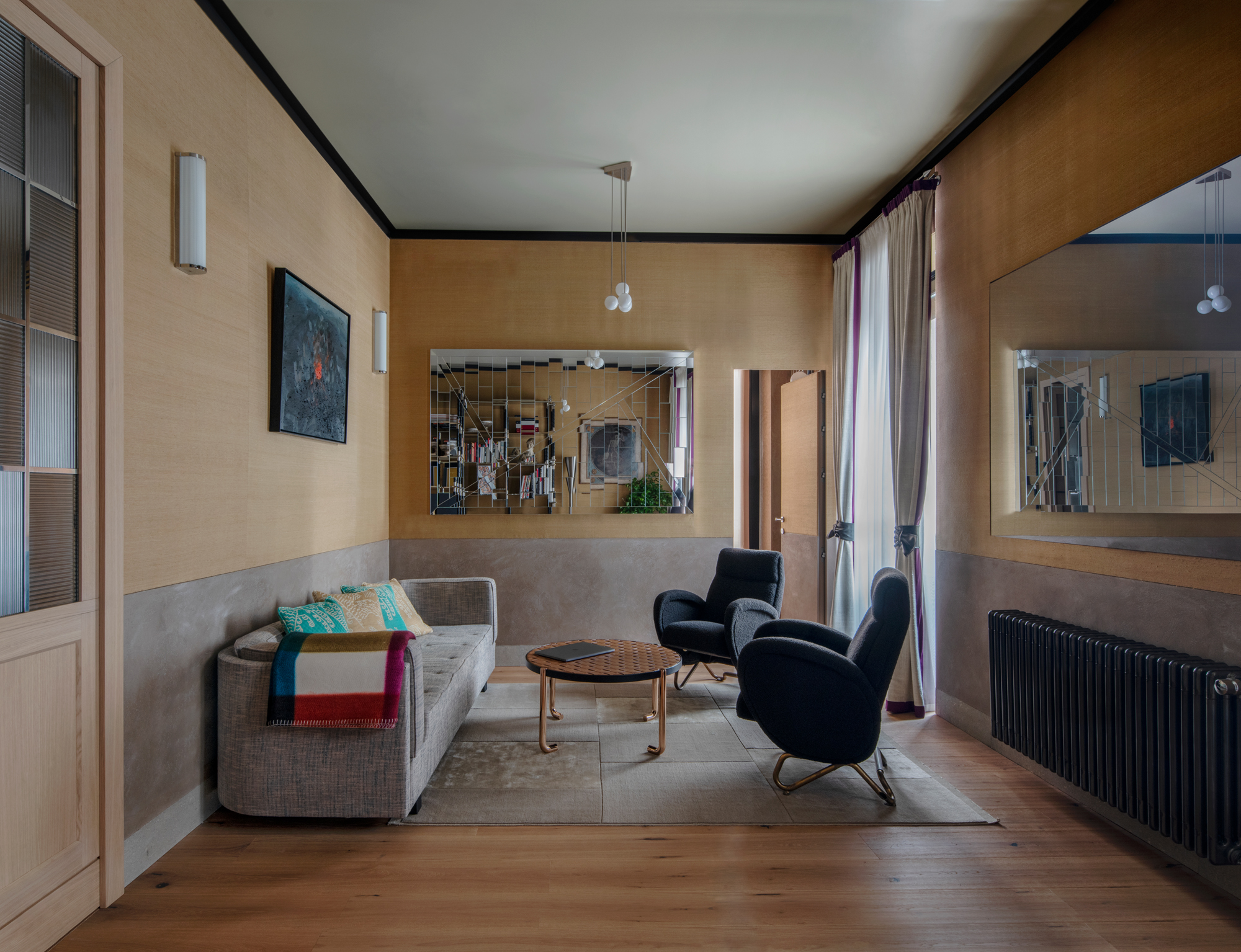
Mikael Olsson - Photography
Entering a Milan apartment living room one flight up from a narrow cobbled street, Luca Guadagnino settles into a Carlo Mollino theatre seat he had reupholstered in a thick, chocolate-coloured Dedar bouclé. Outside, the midday traffic rumbles and roars. But in this yesteryear-inspired apartment interior design he created with wadded silk walls and the antiquatedly discreet charm of the Milanese bourgeoisie, the urban world beyond is hushed and invisible as Guadagnino begins to deliver his thoughts in the rapid-fire clip of a man with two full-time jobs: renowned movie director and upstart interior architect.
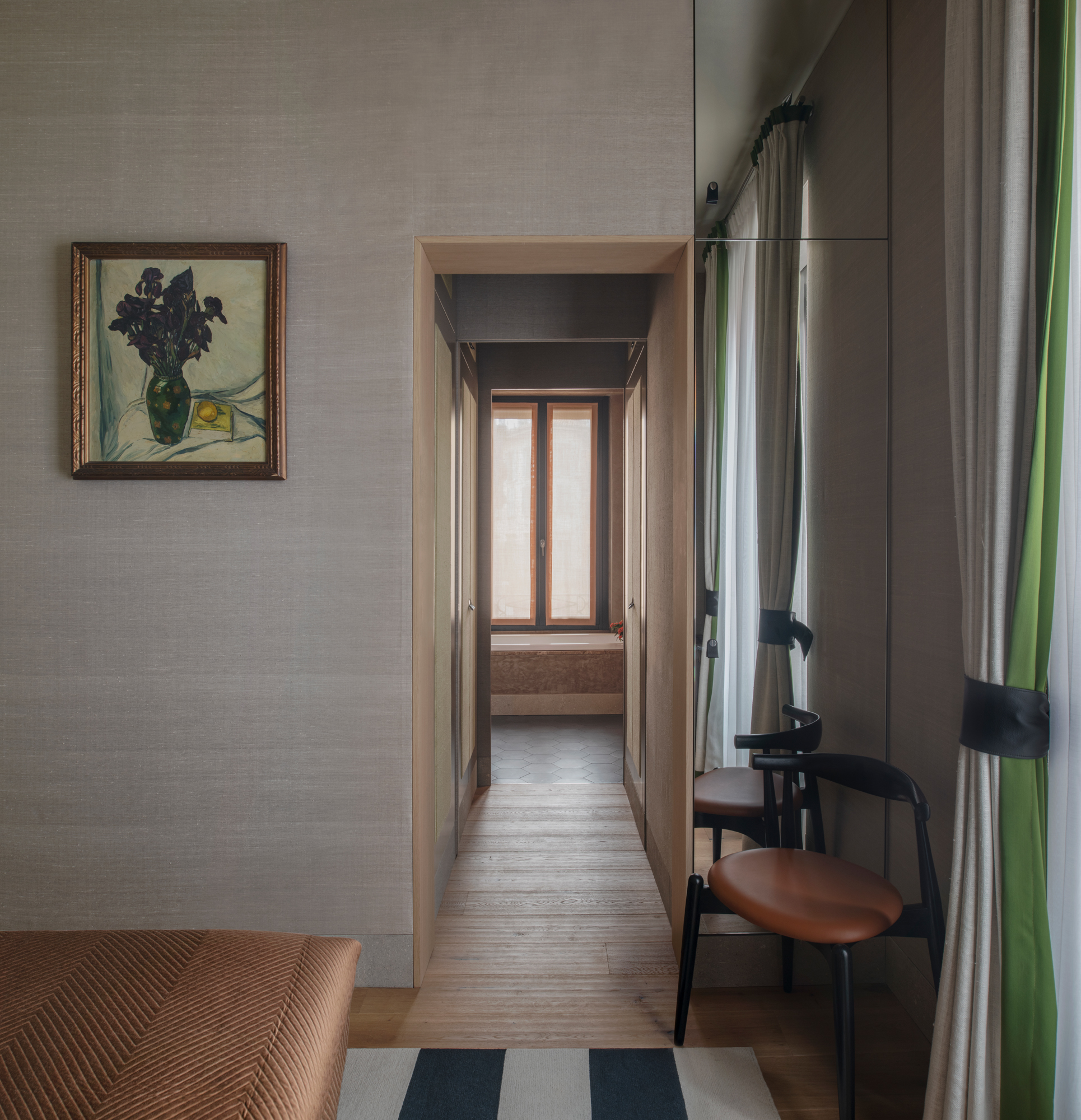
A 1928 oil painting by Ettore Cosomati, from Luca Guadagnino’s own collection, hangs in the master bedroom, which is clad in Dedar’s ‘Fanfara’ raw silk wall fabric
‘Nostalgia plays a fundamental role for all of us,’ he says, dressed in well-worn layers of black, so nostalgic himself that he carries a Nokia dumbphone. ‘To be alive means paying the emotional price of always yearning for a return to something lost.’ As a filmmaker, Guadagnino has treated his audiences to minutely detailed settings in retro saturated colours, their grandeur belonging to no particular era, but with a poignant sense of wistful Italianate beauty. As a designer, or rather, as the creative director of the nine-person Studio Luca Guadagnino, he and his team of architects have found a way to turn that backward-longing gaze into contemporary interiors. He considers his output completely diverse. ‘In cinema, the spaces you create are flat and narrate a character,’ he explains. ‘In design, spaces are three-dimensional and in the service of their owners – a different relationship completely.’ Yet a Guadagnino space, in film or in real life, communicates in the same poetry of emotion.
‘It’s not a matter of “vintage” but of timelessness,’ says Stefano Baisi, an architect in Guadagnino’s studio who designed this Milan apartment together with the director. Timelessness can also be new: the Svenskt Tenn couch Baisi sits on is covered in a modern Dedar fabric, the globe lights above him are by Michael Anastassiades, the tile-cut mirror is by Studio Luca Guadagnino itself.
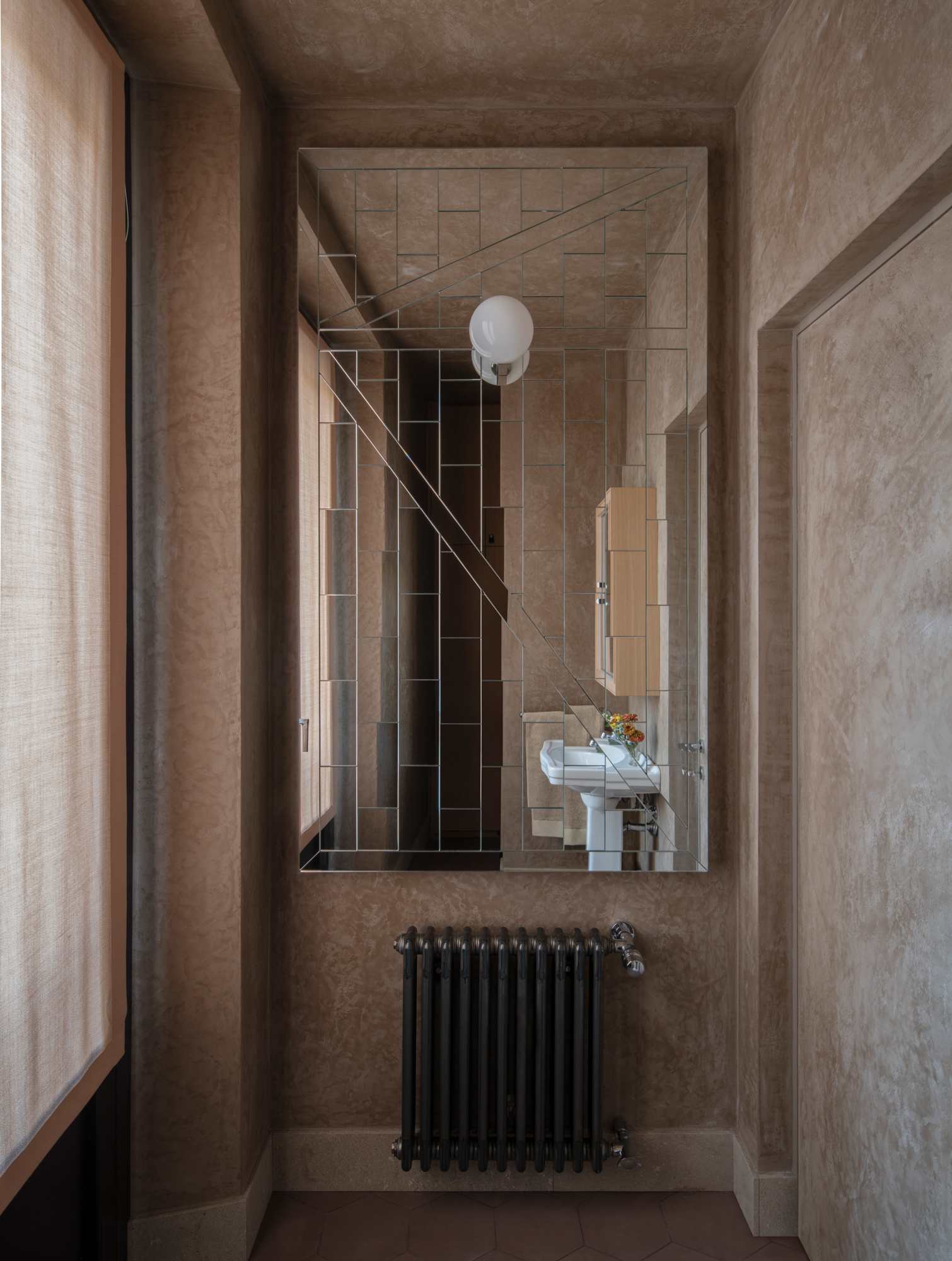
The guest bathroom, with a bespoke mirror by Studio Luca Guadagnino and Moroccan tadelakt walls
The apartment – actually two small apartments now joined internally by an oak staircase, in a casa di ringhiera, a classic Milanese building with long balustraded open-air corridors – belongs to Federico Marchetti, the fashion technology mogul and founder of Yoox, and a two-decade-long friend of Guadagnino. Though Marchetti and his wife, the journalist Kerry Olsen, moved to much larger Milan digs nine years ago, he held onto this apartment (‘a very dear part of my biography’, as he calls it, where he first lived as a student) as a pied-à-terre for guests, and handed its redesign over to his friend.
It was Marchetti, in fact, who first convinced Guadagnino to design interiors. The director, whom Marchetti knew had harboured dreams since childhood of being an architect as well as a filmmaker (‘I’m an eclectic person,’ says Guadagnino), overhauled his own home in Crema, then agreed to take on Marchetti’s 1,500 sq m Lake Como home – a sizable commission for a beginner – and founded Studio Luca Guadagnino at the same time.
‘There’s an incredible sense of trust between us,’ says Marchetti. ‘It’s a trust derived not just from a great friendship, but from faith in Luca’s taste, and a dedication to work we share that I’d label “Calvinist”. When Luca was at the Oscars for Call Me by Your Name, he was still sending me pictures of couches from the audience.’
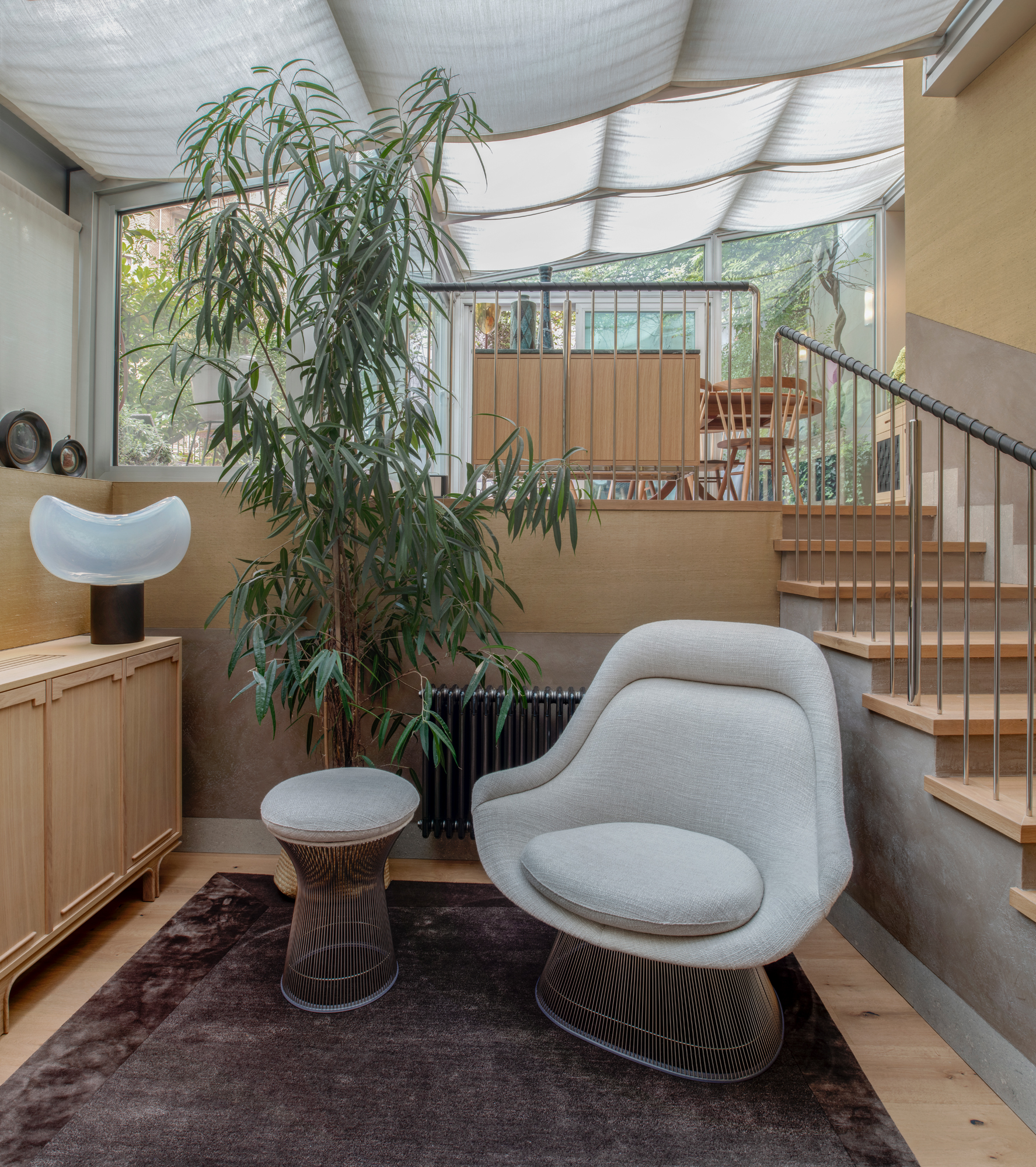
The conservatory, with a bespoke sideboard, vintage table lamp and Warren Platner chair. Steps with a leather-wrapped handrail lead to the bright dining area
The studio harmonised the two floors of Marchetti’s apartment with repeating choruses of materials: the walls’ nubby raw silks in gentle shades of rose and wheat, coarse lime plaster, a surprising bondage-inspired black leather for handrails and curtain holdbacks. Mirrored upstairs doors enlarge the compact space, which has been repartitioned to accommodate two bedrooms and two bathrooms. Twentieth-century designs, such as a George Nakashima dining chair set, mix with the studio’s bespoke steel-frame bookshelves, leather-fronted cabinets, and striking cream and plum kitchen, inspired by the convex curves of the 1950s – ‘a one-of-a-kind kitchen for Federico, since he was such a good sport about letting us do whatever we wanted’, says Guadagnino.
Wallpaper* Newsletter
Receive our daily digest of inspiration, escapism and design stories from around the world direct to your inbox.
For his films, the director refuses to use anything ‘out of the box’, he says, forgoing prop rental warehouses to instead custom-fabricate what he envisions. Interiors by Studio Luca Guadagnino hedge to the same high-craft originality – ‘the use of the most extreme artisanship’, as he calls it, working with master Italian craftspeople to upholster furniture or wrap steel posts in leather.
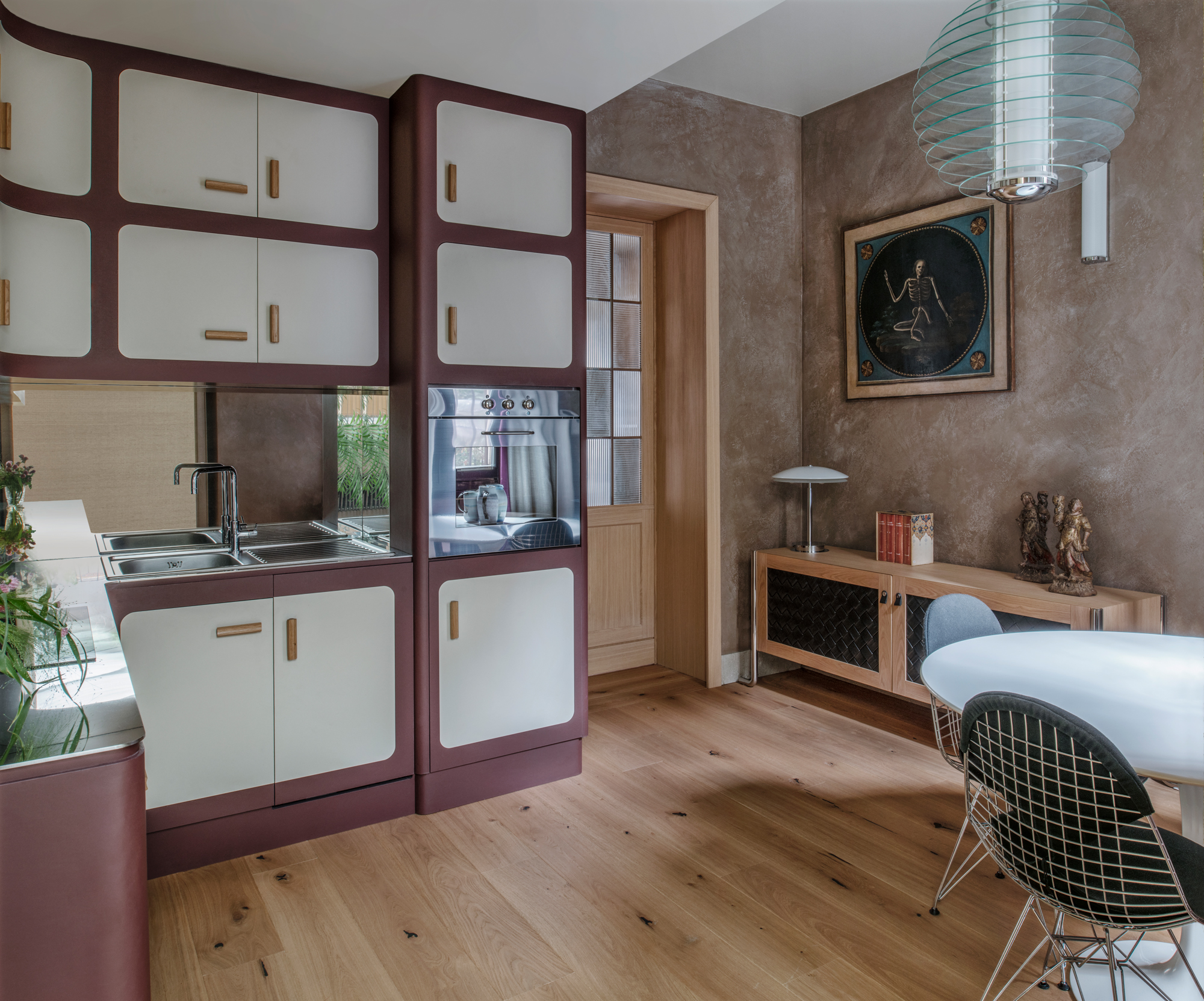
The bespoke kitchen, with a Gio Ponti pendant light, Harry Bertoia chairs and a ‘Tulip’ table, as well as walls in Italian tonachino render and oak floors
A new studio project has an artisan swathing an entire room in woven wicker. ‘There’s a truly rarefied satisfaction when you manage to fuse architectonic design work with the most authentic and specialised artisanship – a union of so many elements and so many personalities creating something together,’ says Guadagnino, heading out by the ribbed glass door for an appointment with an actress.
‘In cinema, you only get this feeling when you see the final performance, but it’s a different world from design.’ Different, perhaps, but to any viewer’s eyes, both the film sets and interiors bear a remarkable kinship of nostalgia.
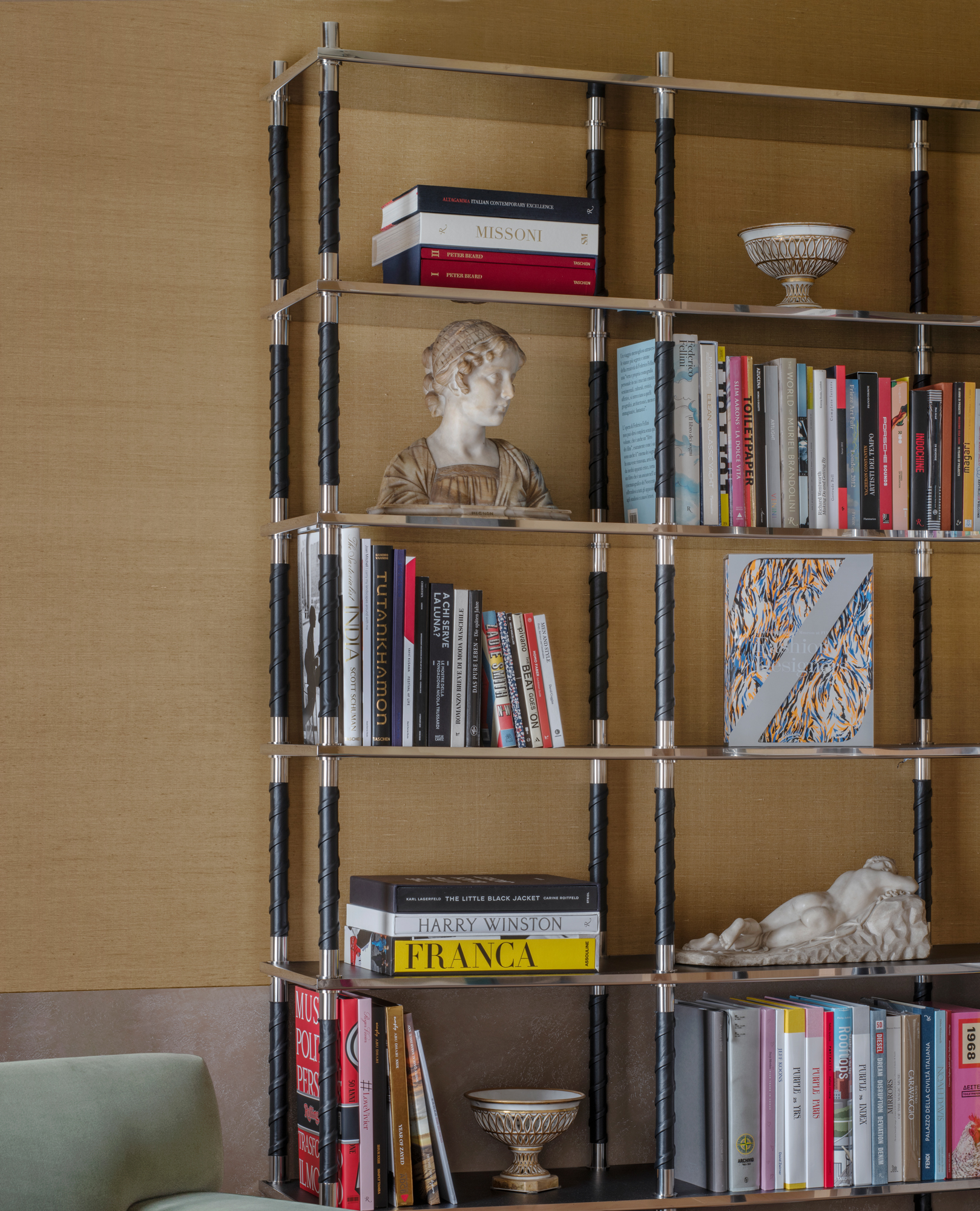
A Studio Luca Guadagnino-designed bookcase in polished steel and black leather
INFORMATION
-
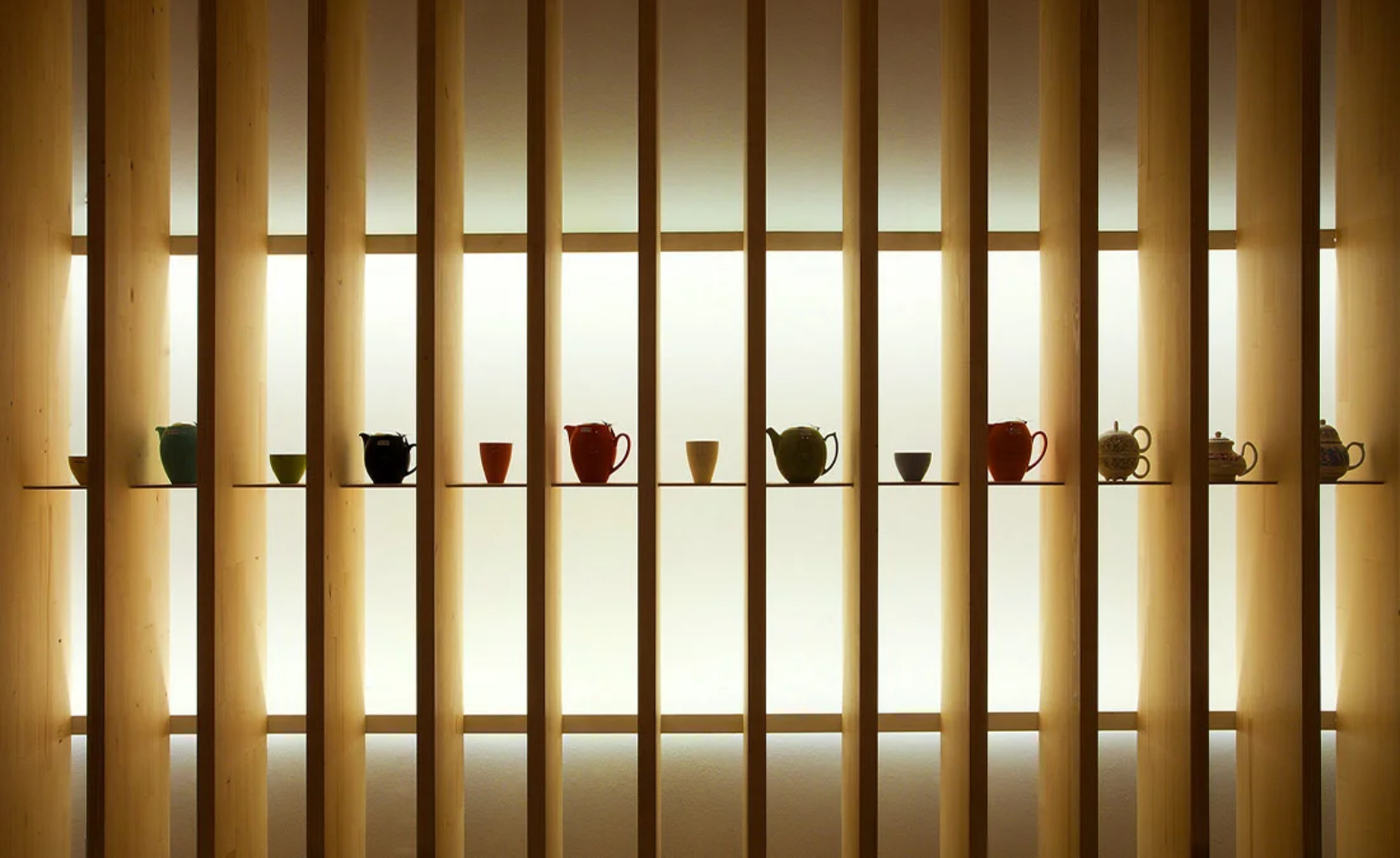 Tour the best contemporary tea houses around the world
Tour the best contemporary tea houses around the worldCelebrate the world’s most unique tea houses, from Melbourne to Stockholm, with a new book by Wallpaper’s Léa Teuscher
By Léa Teuscher
-
 ‘Humour is foundational’: artist Ella Kruglyanskaya on painting as a ‘highly questionable’ pursuit
‘Humour is foundational’: artist Ella Kruglyanskaya on painting as a ‘highly questionable’ pursuitElla Kruglyanskaya’s exhibition, ‘Shadows’ at Thomas Dane Gallery, is the first in a series of three this year, with openings in Basel and New York to follow
By Hannah Silver
-
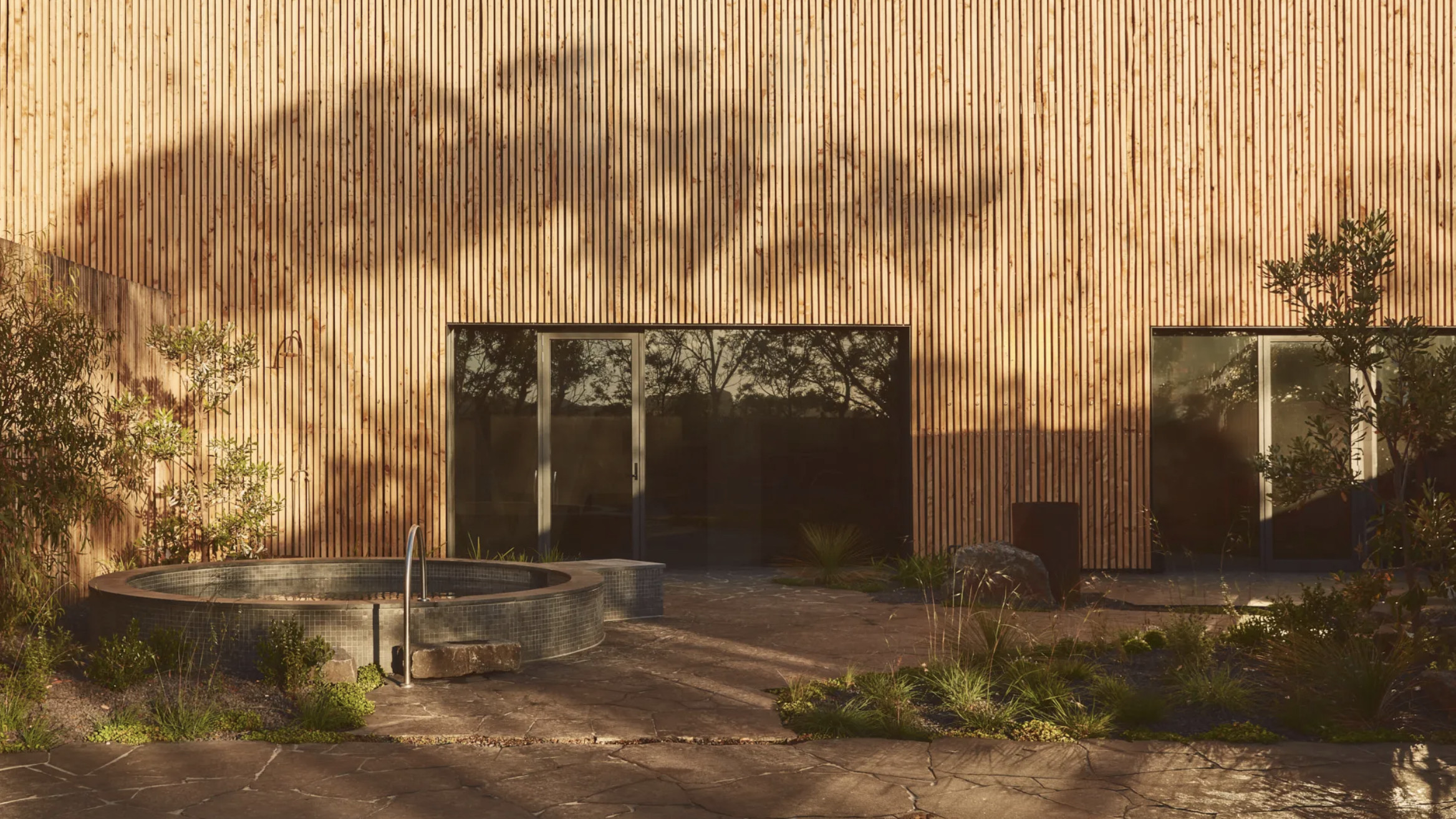 Australian bathhouse ‘About Time’ bridges softness and brutalism
Australian bathhouse ‘About Time’ bridges softness and brutalism‘About Time’, an Australian bathhouse designed by Goss Studio, balances brutalist architecture and the softness of natural patina in a Japanese-inspired wellness hub
By Ellie Stathaki
-
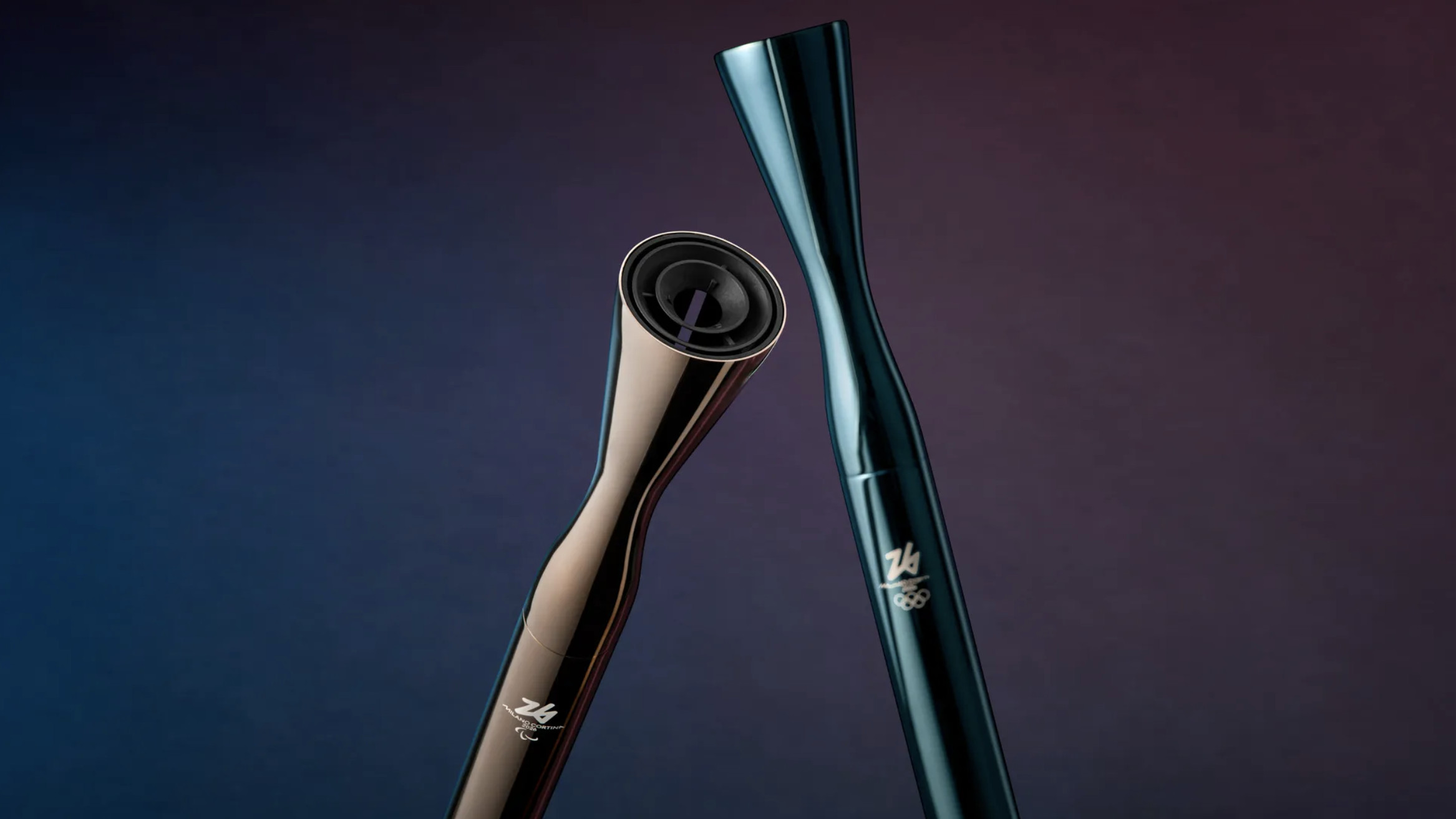 2026 Olympic and Paralympic Torches: in Carlo Ratti's minimalism ‘the flame is the protagonist’
2026 Olympic and Paralympic Torches: in Carlo Ratti's minimalism ‘the flame is the protagonist’The 2026 Olympic and Paralympic Torches for the upcoming Milano Cortina Games have been revealed, designed by architect Carlo Ratti to highlight the Olympic flame
By Ellie Stathaki
-
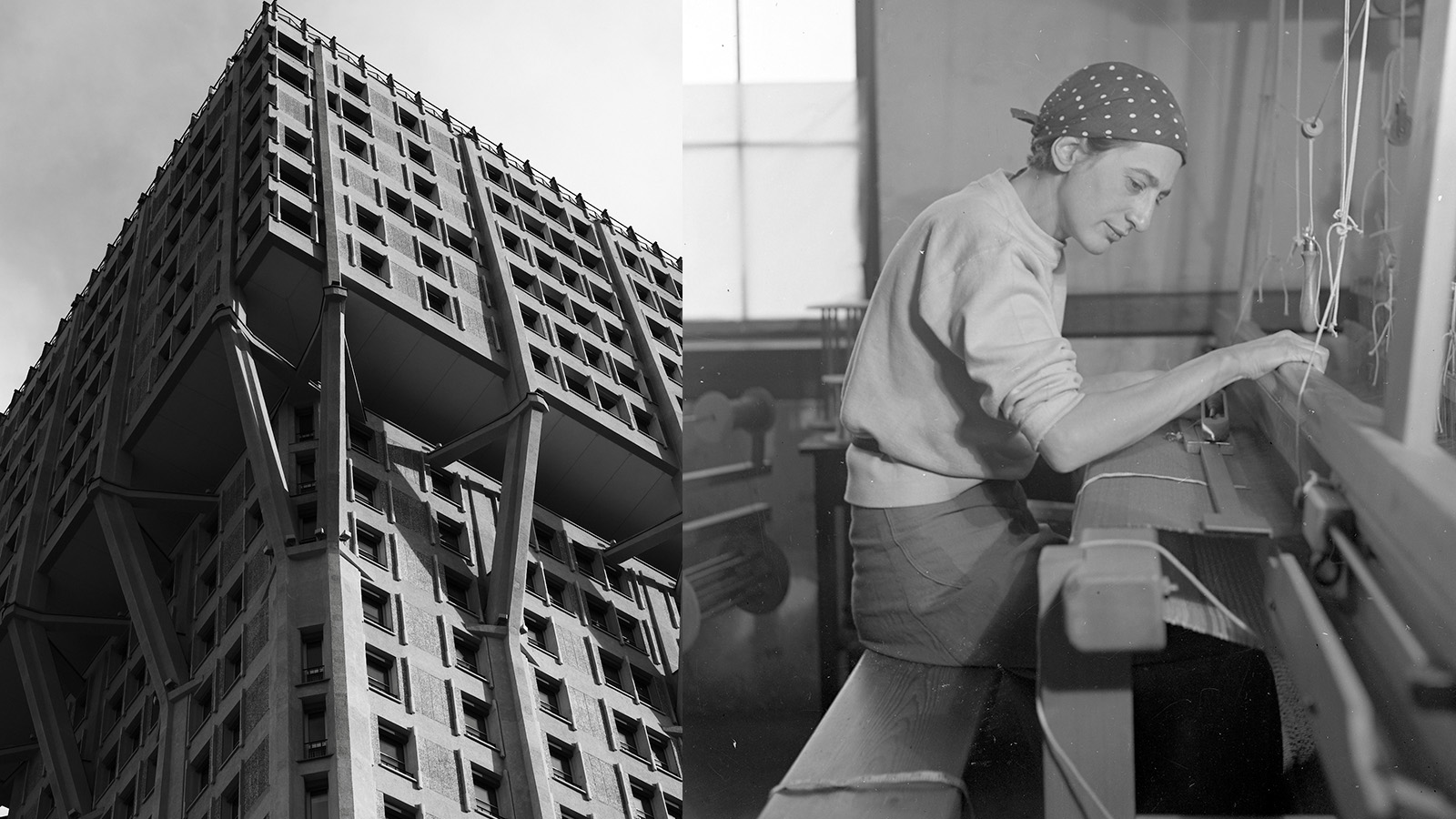 Anni Albers' weaving magic offers a delightful 2-in-1 modernist showcase in Milan
Anni Albers' weaving magic offers a delightful 2-in-1 modernist showcase in MilanA Milan Design Week showcase of Anni Albers’ weaving work, brought to life by Dedar with the Josef & Anni Albers Foundation, brings visitors to modernist icon, the BBPR-designed Torre Velasca
By Ellie Stathaki
-
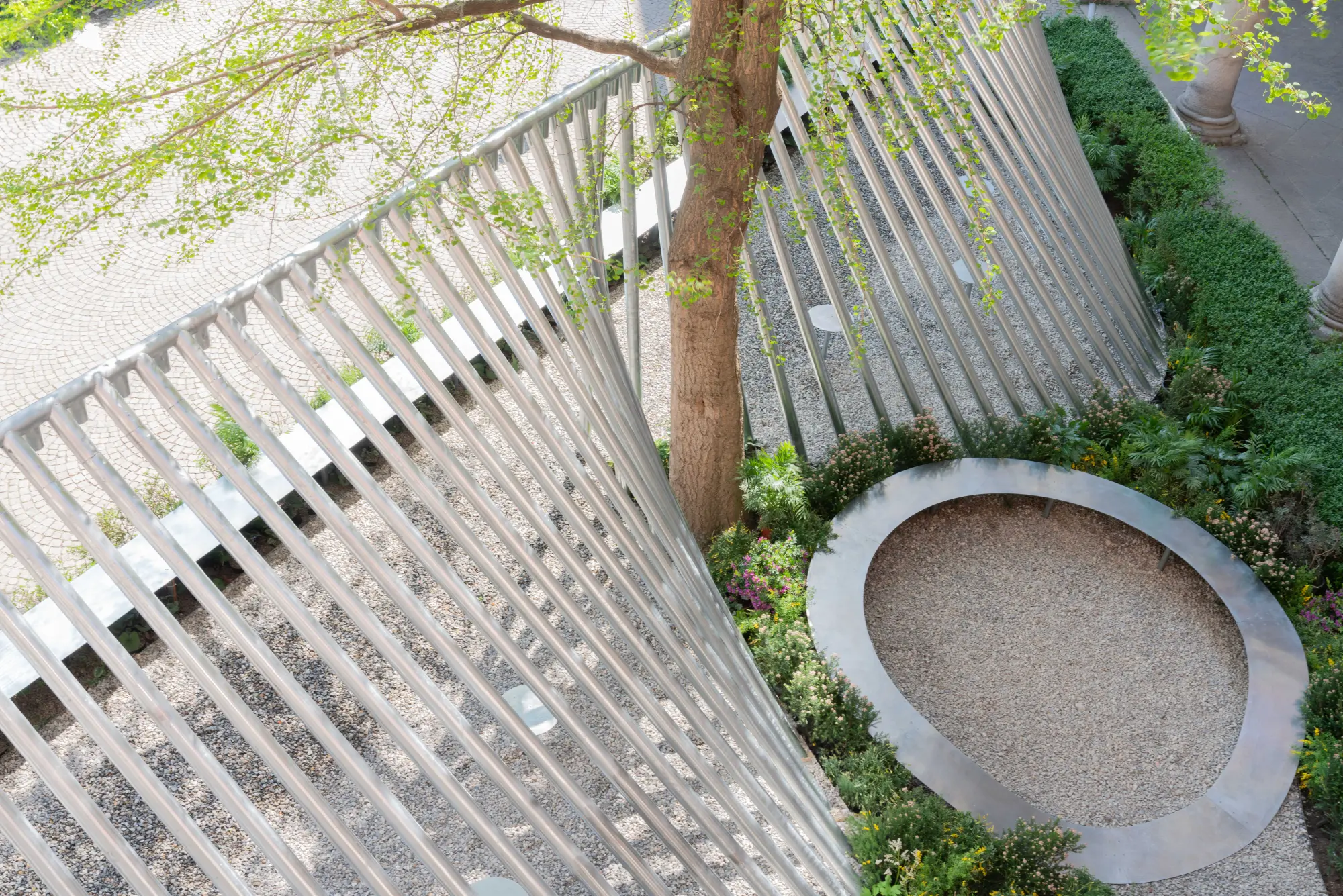 Milan Design Week: ‘A Beat of Water’ highlights the power of the precious natural resource
Milan Design Week: ‘A Beat of Water’ highlights the power of the precious natural resource‘A Beat of Water’ by BIG - Bjarke Ingels Group and Roca zooms in on water and its power – from natural element to valuable resource, touching on sustainability and consumption
By Ellie Stathaki
-
 This Milan Design Week installation invites you to tread barefoot inside a palazzo
This Milan Design Week installation invites you to tread barefoot inside a palazzoAt Palazzo Litta, Moscapartners and Byoung Cho launch a contemplative installation on the theme of migration
By Ellie Stathaki
-
 Milan Design Week: Dropcity challenges detention space design with 'Prison Times'
Milan Design Week: Dropcity challenges detention space design with 'Prison Times'Dropcity's inaugural exhibition 'Prison Times – Spatial Dynamics of Penal Environments', opens a few days before the launch of Milan Design Week and discusses penal environments and their spatial design
By Ellie Stathaki
-
 The upcoming Zaha Hadid Architects projects set to transform the horizon
The upcoming Zaha Hadid Architects projects set to transform the horizonA peek at Zaha Hadid Architects’ future projects, which will comprise some of the most innovative and intriguing structures in the world
By Anna Solomon
-
 Is biodesign the future of architecture? EcoLogicStudio thinks so
Is biodesign the future of architecture? EcoLogicStudio thinks soWe talk all things biodesign with British-Italian architecture practice ecoLogicStudio, discussing how architecture can work with nature
By Shawn Adams
-
 Meet Carlo Ratti, the architect curating the 2025 Venice Architecture Biennale
Meet Carlo Ratti, the architect curating the 2025 Venice Architecture BiennaleWe meet Italian architect Carlo Ratti, the curator of the 2025 Venice Architecture Biennale, to find out what drives and fascinates him ahead of the world’s biggest architecture festival kick-off in May
By Ellie Stathaki